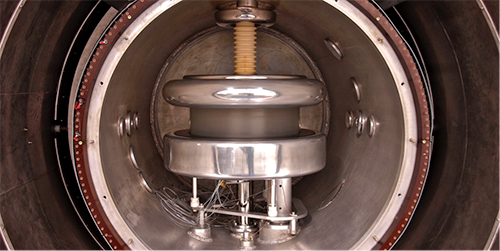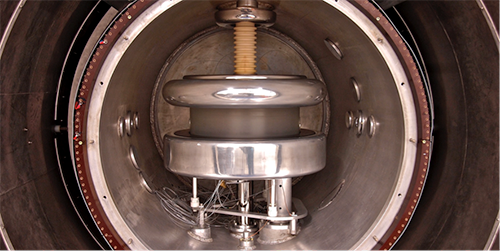New Constraints on Axion-Gluon Interaction Strength
The gravitational pull of dark matter is observed through its effect on the rotations of galaxies. But dark matter could also interact nongravitationally with visible matter. Researchers have now used spin-precession experiments in atoms and neutrons to search for signatures of nongravitational interactions involving dark matter candidates called axions. While the search came up empty handed, the team placed tight constraints on the possible interaction strength of axions with nucleons and gluons.
Axions are theorized to be slow-moving particles that are billions of times lighter than electrons. Therefore, to account for all of the missing matter, there should be so many axions that they fill galaxies—where axions are thought to cluster—like a fluid. Through feeble interactions with visible matter, this axion fluid could induce oscillations in the motion of nuclear spins or in the electric-dipole moments of subatomic particles. These oscillations, while tiny, could be detectable.
The International nEDM (neutron electric dipole moment) collaboration at the Paul Scherrer Institute in Villigen, Switzerland, along with theorists, searched for such oscillations in data from two previously published spin-precession experiments. Those experiments measured the precession frequencies of the magnetic moments of mercury-199 atoms and of ultracold neutrons subjected to electric and magnetic fields, from which the particles’ electric dipole moments were inferred. If the gluons and nucleons in the neutrons were interacting with axions during the experiments, the data should reveal harmonic oscillations with frequencies ranging from nano- to millihertz, depending on the axion mass. The lack of oscillation signals allowed the team to set the first laboratory limits on the interaction strength of axions with gluons, improving those obtained from astrophysical observations of helium-4 by a factor of 1000. They also derived the best limit on the axion-nucleon coupling strength for laboratory-based experiments.
This research is published in Physical Review X.
–Katherine Wright
Katherine Wright is a Contributing Editor for Physics.





